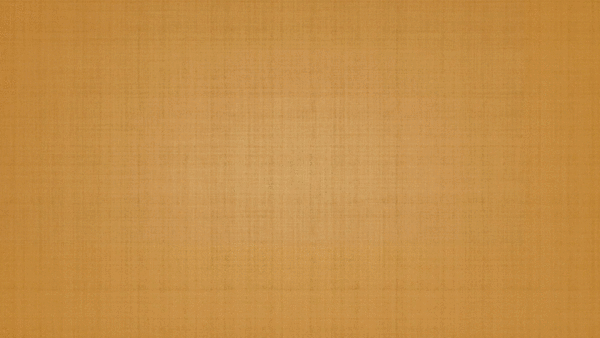60,873 total views, 4 views today

The Tokugawa Shogunate defined modern Japanese history by centralizing the power of the nation’s government and uniting its people.
Before the Tokugawa took power in 1603, Japan suffered through the lawlessness and chaos of the Sengoku (“Warring States”) period, which lasted from 1467 to 1573. Beginning in 1568, Japan’s “Three Reunifiers”—Oda Nobunaga, Toyotomi Hideyoshi, and Tokugawa Ieyasu—worked to bring the warring daimyo back under central control.
In 1603, Tokugawa Ieyasu completed the task and established the Tokugawa Shogunate, which would rule in the emperor’s name until 1868.
The Early Tokugawa Shogunate
Tokugawa Ieyasu defeated the daimyo, who were loyal to the late Toyotomi Hideyoshi and his young son Hideyori, at the Battle of Sekigahara in October 1600. In 1603, the emperor bestowed upon Ieyasu the title of Shogun. Tokugawa Ieyasu established his capital at Edo, a small fishing village on the marshes of the Kanto plain. The village would later become the city known as Tokyo.
Ieyasu formally ruled as shogun for only two years. In order to ensure his family’s claim on the title and to preserve the continuity of policy, he had his son Hidetada named shogun in 1605, running the government from behind the scenes until his death in 1616. This political and administrative savvy would characterize the first Tokugawa shoguns.
The Tokugawa Peace
Life in Japan was peaceful under the control of the Tokugawa government. After a century of chaotic warfare, it was a much-needed respite. For the samurai warriors, peace meant that they were forced to work as bureaucrats in the Tokugawa administration. Meanwhile, the Sword Hunt ensured that nobody but the samurai had weapons.
The samurai were not the only group in Japan forced to change lifestyles under the Tokugawa family. All sectors of society were confined to their traditional roles much more strictly than in the past. The Tokugawa imposed a four-tier class structure that included strict rules about small details—such as which classes could use luxurious silks for their clothing.
Japanese Christians, who had been converted by Portuguese traders and missionaries, were banned from practicing their religion in 1614 by Tokugawa Hidetada. To enforce this law, the shogunate required all citizens to register with their local Buddhist temple, and any who refused to do so were considered disloyal to the bakufu.
The Shimabara Rebellion, made up mostly of Christian peasants, flared up in 1637, but was stamped out by the shogunate. Afterward, Japanese Christians were exiled, executed, or driven underground, and Christianity faded from the country.
Arrival of the Americans
Although they employed some heavy-handed tactics, the Tokugawa shoguns presided over a long period of peace and relative prosperity in Japan. In fact, life was so peaceful and unchanging that it eventually gave rise to the ukiyo—or “Floating World”—a leisurely lifestyle enjoyed by urban samurai, wealthy merchants, and geishas.
The Floating World crashed down to Earth suddenly in 1853, when the American Commodore Matthew Perry and his black ships appeared in Edo Bay. Tokugawa Ieyoshi, the 60-year-old shogun, died soon after Perry’s fleet arrived.
His son, Tokugawa Iesada, agreed under duress to sign the Convention of Kanagawa the following year. Under the terms of the convention, American ships were given access to three Japanese ports where they could take on provisions, and shipwrecked American sailors were to be treated well.
This sudden imposition of foreign power signaled the beginning of the end for the Tokugawa.
The Fall of the Tokugawa
The sudden influx of foreign people, ideas, and money severely disrupted Japan’s lifestyle and economy in the 1850s and 1860s. As a result, Emperor Komei came out from behind the “jeweled curtain” to issue an “Order to Expel Barbarians” in 1864. However, it was too late for Japan to retreat once more into isolation.
Anti-western daimyo, particularly in the southern provinces of Choshu and Satsuma, blamed the Tokugawa shogunate for failing to defend Japan against the foreign “barbarians.” Ironically, both the Choshu rebels and the Tokugawa troops began programs of rapid modernization, adopting many western military technologies. The southern daimyo was more successful in their modernization than the shogunate was.
In 1866, Shogun Tokugawa Iemochi suddenly died, and Tokugawa Yoshinobu reluctantly took power. He would be the fifteenth and last Tokugawa shogun. In 1867, the emperor also died, and his son Mitsuhito became the Meiji Emperor.
Faced with a growing threat from the Choshu and Satsuma, Yoshinobu relinquished some of his powers. On November 9, 1867, he resigned from the office of the shogun, which was abolished, and the power of the shogunate was handed over to a new emperor.
The Rise of the Meiji Empire
The southern daimyo launched the Boshin War to ensure that power would rest with the emperor rather than with a military leader. In 1868, the pro-imperial daimyo announced the Meiji Restoration, under which the young Emperor Meiji would rule in his own name.
After 250 years of peace and relative isolation under the Tokugawa shoguns, Japan launched itself into the modern world. Hoping to escape the same fate as once-powerful China, the island nation threw itself into developing its economy and military might. By 1945, Japan had established a new empire across much of Asia.
History App That Make Learning History Exciting
Sengoku The Unforgettable

Learn more about this game : link

